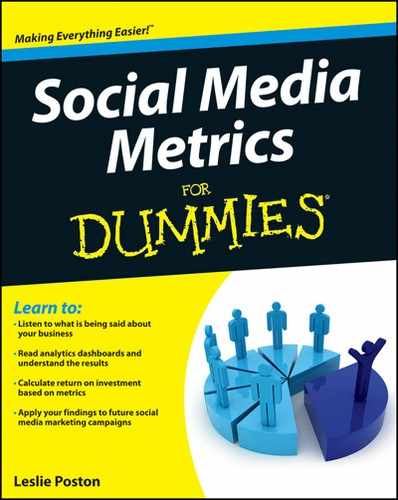Figure 8-3: Dayparting looks like this in your Analytics.
Getting Familiar with Metrics Language and Abbreviations
The world of social media, the social web, and metrics seems to come with its own language. Without turning the chapter into a glossary or full-fledged dictionary, I thought I’d quickly cover some terms you’ll continue to hear and see the most while navigating social media metrics:
![]() Analytics: The catchall phrase for the data gathered from people viewing and interacting with your website or a piece of content that you have shared in social media, such as IP address, location, page views, conversions, and so on.
Analytics: The catchall phrase for the data gathered from people viewing and interacting with your website or a piece of content that you have shared in social media, such as IP address, location, page views, conversions, and so on.
![]() Bandwidth: Can refer to the amount of data being served by your web host (for example, a regular video download uses bandwidth, but a high-quality video download uses more bandwidth) or to the amount of attention your customer has to give your content and engagement.
Bandwidth: Can refer to the amount of data being served by your web host (for example, a regular video download uses bandwidth, but a high-quality video download uses more bandwidth) or to the amount of attention your customer has to give your content and engagement.
![]() Bounce rate: When a visitor to your website leaves after only viewing a single page, it’s a bounce. Your bounce rate is a number reflecting the percentage of all visitors who leave after only viewing a single page in a given time frame.
Bounce rate: When a visitor to your website leaves after only viewing a single page, it’s a bounce. Your bounce rate is a number reflecting the percentage of all visitors who leave after only viewing a single page in a given time frame.
![]() Business objectives: A list of goals and objectives set down in writing for a company to achieve, often going hand in hand with a written mission or brand statement.
Business objectives: A list of goals and objectives set down in writing for a company to achieve, often going hand in hand with a written mission or brand statement.
![]() Conversion: A procedure web visitors complete on your website that leads to new business, sales leads, product sold, items downloaded, or other voluntary acts beyond simply viewing the site.
Conversion: A procedure web visitors complete on your website that leads to new business, sales leads, product sold, items downloaded, or other voluntary acts beyond simply viewing the site.
![]() Dayparting: Using analytics data to figure out what day(s) of the week and time of day your site (or ad) gets the most conversions and then optimizing accordingly (see Figure 8-3).
Dayparting: Using analytics data to figure out what day(s) of the week and time of day your site (or ad) gets the most conversions and then optimizing accordingly (see Figure 8-3).
![]() Goals: A statement of business intent. For example “I want to make more money” is a hope, not a goal. “I want to seat 15 percent more people this month using online ads” is a goal.
Goals: A statement of business intent. For example “I want to make more money” is a hope, not a goal. “I want to seat 15 percent more people this month using online ads” is a goal.
![]() Key Performance Indicator(s) (KPI): Parameters intended to measure the business and marketing goals you set.
Key Performance Indicator(s) (KPI): Parameters intended to measure the business and marketing goals you set.
![]() Macro conversion: The measurement of an outcome from a site visit (for example, a purchase).
Macro conversion: The measurement of an outcome from a site visit (for example, a purchase).
![]() Micro conversion: The measurement of the incremental steps that may lead to a macro conversion (for example, printing a product page, which may show intent to purchase in store; or printing directions, which can indicate the same thing).
Micro conversion: The measurement of the incremental steps that may lead to a macro conversion (for example, printing a product page, which may show intent to purchase in store; or printing directions, which can indicate the same thing).
![]() Opt-in: Often called permission marketing, requires your potential customer to opt in to how they want their data used (or not used).
Opt-in: Often called permission marketing, requires your potential customer to opt in to how they want their data used (or not used).
![]() Pay-per-click (PPC): Internet advertising model in which advertisers only pay the ad host when the ad is clicked.
Pay-per-click (PPC): Internet advertising model in which advertisers only pay the ad host when the ad is clicked.
![]() Search crawler: Sometimes called a spider, is the search engine’s automated program that surfs the web by leaping from one
Search crawler: Sometimes called a spider, is the search engine’s automated program that surfs the web by leaping from one href link to another and tracking the links to provide search results.
![]() Search Engine Optimization (SEO): Using keywords, content, and other tactics to improve how well a site appears in natural, organic search results.
Search Engine Optimization (SEO): Using keywords, content, and other tactics to improve how well a site appears in natural, organic search results.
![]() Segmentation: Targeting your marketing efforts and analytics results by particular criteria, such as age, location, income, referring site, or browser.
Segmentation: Targeting your marketing efforts and analytics results by particular criteria, such as age, location, income, referring site, or browser.
![]() Social Media Optimization (SMO): Sometimes known as social SEO, uses targeted social media engagement to bring new visitors and attention to a website and its content.
Social Media Optimization (SMO): Sometimes known as social SEO, uses targeted social media engagement to bring new visitors and attention to a website and its content.

